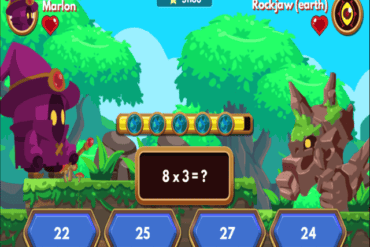Unraveling the Mysteries of Tasmanian Devils: A Parent’s Guide
Welcome joyous parents, guardians, and curious minds! Prepare to embark on an enchanting journey to learn about one of nature’s most intriguing and often misunderstood creatures – the Tasmanian Devil. This guide is brimming with fascinating facts, enthralling educational tips, and insights on conservation, making it the perfect resource for imparting a love for wildlife to your young adventurers. So grab a comfy seat, gather your eager learners, and let’s unravel the mysteries of the Tasmanian Devil together!
What is a Tasmanian Devil?
Imagine a small, fierce creature with a rambunctious spirit and an endearing presence that captivates the wild heart of Tasmania’s forests. Yes, we are talking about the iconic Tasmanian Devil—a nocturnal marsupial that has captured the imagination of people worldwide. Despite its name and feisty nature, this animal is a remarkable part of Australia’s unique ecology. It’s the largest carnivorous marsupial in the world since the tragic extinction of its relative, the Thylacine, or Tasmanian Tiger, in the 1930s.
Major Features of the Tasmanian Devil
Tasmanian Devils are not just remarkable for their ecological role, but they also have some distinct physical traits. They have a stocky build with black fur, often with unique white markings on their chest. These nocturnal animals sport sharp, robust teeth that are capable of crushing bones, and they have a strong, pungent odor that they use to communicate with other devils.
Understanding their Habitat and Lifestyle
Now then, where do these energetic creatures live, you may wonder? Tasmanian Devils are endemic to the island of Tasmania, just south of Australia. They prefer the shelter of the forest and coastal scrub, but they aren’t too picky and can adapt to live in various habitats. Devils are largely solitary and nocturnal, coming out at night to hunt and scavenge for food. They are known for their loud, fierce feeding frenzies, which can be quite the sound to hear in the dark Tasmanian nights!
Exploring the Diet of a Tasmanian Devil
One of the coolest aspects of Tasmanian Devils is their role as nature’s cleanup crew. Their diet mainly consists of carrion, which helps to keep their environment clean. However, they are also skilled hunters, capable of taking down small prey such as birds, snakes, and even wallabies. This feasting not only sustains them but also plays a pivotal role in the balance of the ecosystem, preventing the spread of disease from dead animals.
Why Education is Key
Understanding and appreciating the role of creatures like the Tasmanian Devil in our world is so important. As parents, we have the joyful task of nurturing empathy and respect for wildlife in our children. By teaching about the Tasmanian Devil, we can inspire future generations to take part in conservation efforts. These incredible animals face threats from disease and habitat loss, and awareness is the first step toward making a change.

Five Things Parents Should Know About Tasmanian Devils
-
Fascinating and Vulnerable
Tasmanian Devils are not only fascinating due to their unique behaviors and appearances but they are also a vulnerable species. This means conversations at home can extend beyond biology to include discussions on environmental stewardship. It’s a chance to teach children about the importance of biodiversity and the need to protect such incredible species for the health of our planet.
-
The Devil Facial Tumor Disease (DFTD)
One significant threat to these creatures is the Devil Facial Tumor Disease, a unique and contagious cancer that has led to a drastic decline in their population. When explaining this to children, it’s an opportunity to highlight the importance of scientific research and conservation, and how diseases can affect not just humans, but all species on Earth.
-
Ecological Impact
Tasmanian Devils play a critical role in their ecosystem. They are scavengers that help to keep forests clean and control populations of various other species. Talking to kids about this helps them understand food chains, inter-species relationships, and the delicate balance of ecosystems.
-
Conservation Efforts
Several conservation programs are in place to help save the Tasmanian Devil from extinction. This includes breeding programs, cancer research, and habitat protection. Parents can use this as an example to show children that positive human intervention can make a difference in preserving wildlife.
-
Getting Involved
Finally, there are many ways families can get involved in helping Tasmanian Devils. From adopting a devil through a wildlife organization to supporting ethical tourism in Tasmania, there are action-oriented steps that can be taken. This teaches children the value of taking action for causes they care about and demonstrates responsible global citizenship.
Social Behaviors and Unique Adaptations
Despite their solitary nature, Tasmanian Devils do have social interactions, particularly at feeding sites. They communicate through a series of grunts, growls, and screeches. Understanding these behaviors can be incredibly fun for children, allowing them to mimic sounds and learn about animal communication.
Their physical adaptations are nothing short of fascinating. Did you know that their powerful jaws can exert a bite force equivalent to that of a much larger predator? Or that they have a keen sense of smell which enables them to locate food over long distances? These intriguing facts can encourage an interest in biology and the adaptation of species.
The Challenges Tasmanian Devils Face
Aside from disease, habitat destruction and vehicle collisions are significant challenges for devils. Engage with your children by brainstorming ways we can lessen our impact on animal habitats. Furthermore, climate change poses a threat to their survival, linking to larger discussions about global environmental issues.
How We Can Help With Conservation
Getting children involved in conservation can be as simple as participating in local wildlife protection programs or following “Tasmanian Devil Day” activities. Encourage children to draw or write about devils; this not only fosters creativity but also deepens their connection with the species. Contributing to organizations focused on Tasmanian Devil conservation can also be a family activity that supports these creatures’ continued existence.
For more great fun click here. For more information see here
Disclaimer
The articles available via our website provide general information only and we strongly urge readers to exercise caution and conduct their own thorough research and fact-checking. The information presented should not be taken as absolute truth, and, to the maximum extent permitted by law, we will not be held liable for any inaccuracies or errors in the content. It is essential for individuals to independently verify and validate the information before making any decisions or taking any actions based on the articles.




